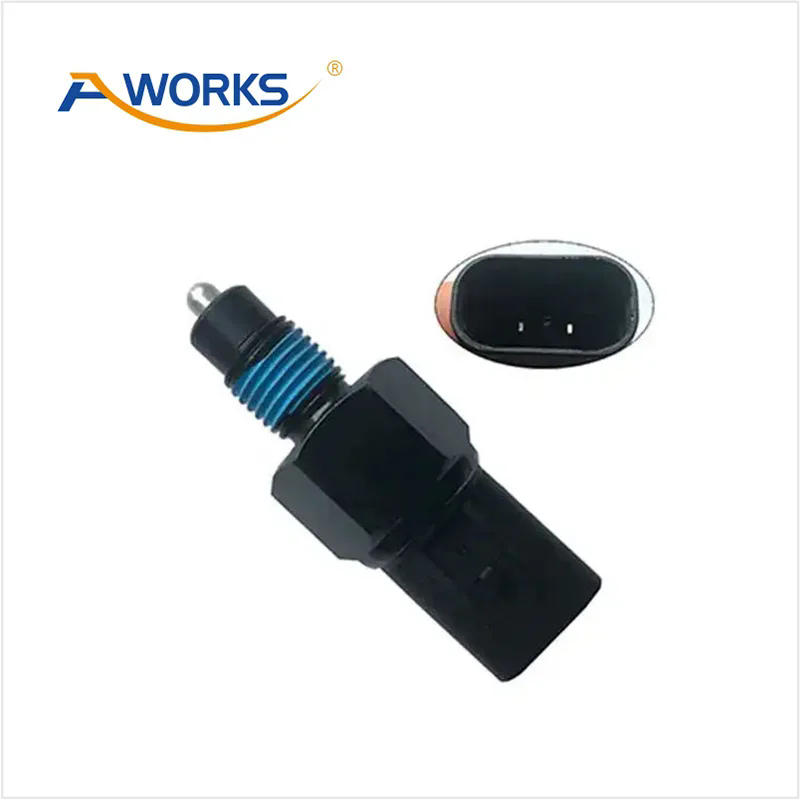Key Aspects of a Reverse Lamp Switch
2024-06-12
A reverse lamp switch, often referred to as a reverse light switch or backup light switch, is an important component in a vehicle's electrical system. It activates the reverse lights when the vehicle is put into reverse gear, signaling to other drivers and pedestrians that the vehicle is backing up.
Key Aspects of a Reverse Lamp Switch
Function
- Activation of Reverse Lights: The primary function is to illuminate the reverse lights when the transmission is shifted into reverse gear.
- Safety Feature: Provides a visual indication to other road users that the vehicle is about to move backward, enhancing safety.
Location
- Manual Transmission Vehicles: Usually located on the transmission housing. It is mechanically activated when the reverse gear is engaged.
- Automatic Transmission Vehicles: Typically integrated into the gear selector mechanism or located on the transmission housing.
Types of Reverse Lamp Switches
1. Mechanical Switches:
- Activated by physical movement when the gear shift lever is placed into reverse.
- Common in older vehicles and some manual transmissions.
2. Electronic Switches:
- Uses electronic signals to detect the reverse gear engagement.
- Common in modern vehicles with automatic transmissions.
Components
- Switch Body: The main housing that contains the internal contacts and mechanism.
- Connector: Electrical connection point for the vehicle’s wiring harness.
- Actuator: The part that moves to activate the switch, which may be a plunger, lever, or other mechanisms.
Working Principle
- Manual Transmission:
1. When the reverse gear is engaged, a mechanism inside the transmission pushes the actuator on the switch.
2. This closes the internal contacts of the switch, completing the electrical circuit.
3. Power is supplied to the reverse lights, illuminating them.
- Automatic Transmission:
1. The gear selector moves into the reverse position.
2. The reverse switch detects this position change electronically or mechanically.
3. The switch completes the circuit, powering the reverse lights.
Symptoms of a Faulty Reverse Lamp Switch
- Reverse Lights Not Working: If the reverse lights do not illuminate when the vehicle is put into reverse, the switch may be faulty.
- Intermittent Operation: Reverse lights work sporadically, indicating a possible loose connection or failing switch.
- No Power to Reverse Lights: Testing with a multimeter may show no power reaching the reverse lights.
Diagnosis and Replacement
1. Diagnosis:
- Visual Inspection: Check the switch and wiring for obvious signs of damage or disconnection.
- Multimeter Test: Measure the continuity and voltage to ensure the switch is functioning correctly.
2. Replacement:
- Locate the Switch: Identify the exact location of the reverse lamp switch on your vehicle (refer to the vehicle's service manual if needed).
- Disconnect the Battery: Ensure safety by disconnecting the vehicle’s battery.
- Remove the Old Switch: Disconnect the wiring harness and unscrew the old switch.
- Install the New Switch: Screw in the new switch and reconnect the wiring harness.
- Test the System: Reconnect the battery and test the reverse lights to ensure proper operation.
Maintenance Tips
- Regular Inspection: Periodically check the reverse lights and switch for proper operation.
- Clean Connections: Ensure electrical connections are clean and free from corrosion.
- Address Issues Promptly: Replace a faulty switch immediately to maintain vehicle safety.
Conclusion
The reverse lamp switch is a vital safety component in any vehicle, ensuring that reverse lights operate correctly to signal reversing maneuvers. Understanding its function, common issues, and how to diagnose and replace a faulty switch can help maintain vehicle safety and compliance with road regulations.



